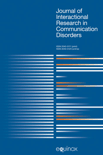
Journal of Interactional Research in Communication Disorders
Scope & Guideline
Empowering Research for Effective Communication Solutions
Introduction
Aims and Scopes
- Interactional Analysis of Communication Disorders:
The journal emphasizes the study of communication disorders through the lens of interactional practices, exploring how individuals with disorders engage in conversations and social interactions. - Multimodal Communication:
Research in this journal often investigates the use of multimodal communication strategies, including non-verbal cues and alternative communication methods, to understand how individuals with communication disorders express themselves. - Inclusive Practices and Support Strategies:
The journal highlights research on inclusive practices within educational and therapeutic settings, focusing on how to support individuals with communication disorders effectively. - Cultural and Linguistic Diversity:
The scope includes the examination of communication disorders across different cultural and linguistic backgrounds, recognizing the impact of these factors on communication practices and intervention strategies. - Impact of Technology on Communication:
Research on how technological advancements, such as speech-generating devices and online platforms, influence communication practices among individuals with disorders is a key focus area.
Trending and Emerging
- Peer Interaction and Collaboration:
There is a growing emphasis on understanding collaborative behaviors in peer interactions, particularly among children with communication disorders, indicating a shift towards valuing social engagement in therapeutic contexts. - Impact of Technology on Communication Strategies:
Emerging studies are increasingly focusing on how technology, including speech-generating devices and online platforms, facilitates communication for individuals with disorders, underscoring the relevance of digital tools in therapy. - Bilingualism and Multiculturalism in Communication Disorders:
Research exploring bilingualism and the effects of cultural diversity on communication practices is on the rise, reflecting a broader understanding of language use in varied contexts. - Health Behavior Models in Communication Disorders:
The integration of health behavior models to explain communication disorders indicates an emerging trend towards understanding the psychosocial factors that influence communication practices and interventions. - Therapeutic Relationships and Interactional Dynamics:
An increasing focus on the dynamics of therapeutic relationships and their impact on communication outcomes suggests a recognition of the importance of interpersonal interactions in therapy.
Declining or Waning
- Traditional Assessment Methods:
There is a noticeable decrease in research focused solely on traditional assessment methods for communication disorders, as the field increasingly emphasizes dynamic and interactional approaches. - General Stuttering Research:
While stuttering remains an important area of study, the specific focus on general aspects of stuttering without a contextual or interactional lens has diminished, as more nuanced approaches are favored. - Atypical Language Development Studies:
Research centered on atypical language development without considering interactional contexts or the social implications of these disorders has become less frequent, reflecting a shift towards more integrated studies. - Single-Disorder Focus:
There has been a decline in publications that focus exclusively on single disorders, with a growing trend towards examining co-occurring conditions and their impact on communication. - Discourse Analysis in Isolation:
The use of discourse analysis as a standalone method has waned, as researchers increasingly combine this method with other qualitative approaches to provide richer insights into communication disorders.
Similar Journals
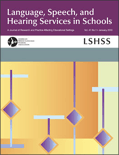
LANGUAGE SPEECH AND HEARING SERVICES IN SCHOOLS
Bridging theory and practice in speech-language education.LANGUAGE SPEECH AND HEARING SERVICES IN SCHOOLS is a leading academic journal published by the American Speech-Language-Hearing Association, dedicated to advancing the fields of linguistics, speech, and hearing within the educational setting. With an ISSN of 0161-1461 and an E-ISSN of 1558-9129, this journal plays a pivotal role in disseminating peer-reviewed research that addresses critical issues faced by speech-language pathologists, educators, and researchers in schools. It has earned a distinguished reputation, ranking in the Q1 category for both Linguistics and Speech and Hearing in 2023, attesting to its impact and relevance in these fields. The journal seeks to publish original research, reviews, and evidence-based practices that improve speech and language services in educational contexts. Although it is not an open-access journal, it remains vital for professionals aiming to enhance communication disorders management in school environments. By bridging theoretical research and practical application, LANGUAGE SPEECH AND HEARING SERVICES IN SCHOOLS serves as an indispensable resource for advancing the scientific understanding of speech and language processing in educational settings.
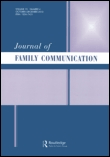
JOURNAL OF FAMILY COMMUNICATION
Bridging Research and Practice in Family InteractionsJOURNAL OF FAMILY COMMUNICATION, published by Routledge Journals, Taylor & Francis Ltd, stands at the forefront of interdisciplinary research within the field of communication, specifically focusing on familial interactions. Established to foster scholarly dialogue, this esteemed journal offers a platform for diverse perspectives that enrich the understanding of communication practices in family contexts. With an impressive 2023 impact factor placing it in the top quartile (Q1) of Communication studies and a notable Q2 ranking in Social Psychology, it attracts high-quality submissions that explore the complexities of family dynamics. Researchers and practitioners will find valuable insights here, facilitated by significant contributions to both communication theory and social psychology. Although not an open-access journal, the JOURNAL OF FAMILY COMMUNICATION continues to serve as an essential resource for scholars looking to make impactful advancements in the understanding of how communication shapes family relationships from 2010 to 2024 and beyond.
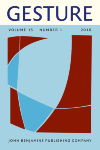
Gesture
Capturing the essence of communication beyond words.Gesture, published by JOHN BENJAMINS PUBLISHING CO, is a leading interdisciplinary journal that focuses on the study of human gestural communication as a rich field for linguistic and cognitive research. With an ISSN of 1568-1475 and an E-ISSN of 1569-9773, the journal has been influential since its inception in 2001, providing a vital forum for researchers and professionals studying the interplay between gesture and language. It significantly contributes to various academic fields, evidenced by its remarkable rankings, including Q1 in Cultural Studies and Q2 in Linguistics and Language as of 2023. While it does not offer Open Access, its high impact in scholarly communication makes it indispensable for anyone wanting to explore the nuances of non-verbal expression. The journal maintains a dynamic scope, converging scholarship from 2001 to 2014 and continuing robustly from 2016 to 2024, solidifying its position in the social sciences sector, particularly in the realms of communication, cultural studies, and cognitive psychology. Gesture is published from the Netherlands, and its esteemed reputation ensures that it attracts contributions from top-tier researchers worldwide, making it a crucial resource for advancing knowledge and understanding in the field.
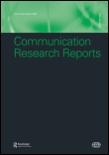
Communication Research Reports
Elevating Scholarly Dialogue in Communication PracticesCommunication Research Reports, published by Taylor & Francis Ltd, is an esteemed academic journal in the field of communication studies, known for its rigor and scholarly contribution since its inception in 1988. With an impressive Q1 ranking in the Communication category as of 2023, it stands out as a pivotal resource for researchers, professionals, and students alike. This journal focuses on disseminating high-quality empirical research and theoretical discussions that advance understanding in communication practices and dynamics. Although it does not operate under an Open Access model, its consistent publication continues to engage a global audience and supports the ongoing dialogue within the discipline. With its commitment to enhancing scholarly communication, Communication Research Reports is vital for those looking to stay abreast of cutting-edge developments in the social sciences, specifically within communication.
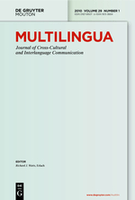
Multilingua-Journal of Cross-Cultural and Interlanguage Communication
Illuminating the Nuances of Interlanguage CommunicationMultilingua: Journal of Cross-Cultural and Interlanguage Communication is a premier academic journal published by DE GRUYTER MOUTON, specializing in the dynamic fields of communication and linguistics. Established in 1982, this journal has significantly contributed to the discourse surrounding multilingualism, intercultural interactions, and language acquisition, with a notable reputation backed by an impressive Q1 ranking in both Communication and Linguistics and Language for 2023. Positioned strategically at the heart of Germany, the journal serves as a vital platform for researchers, professionals, and students alike, fostering scholarly exchange and insights into cross-cultural communication practices. With rankings placing it in the top percentiles across key categories in Scopus, including Arts and Humanities and Social Sciences, Multilingua exemplifies the highest standards of academic excellence. Although currently not an Open Access journal, it continues to provide a wealth of knowledge to the global research community.
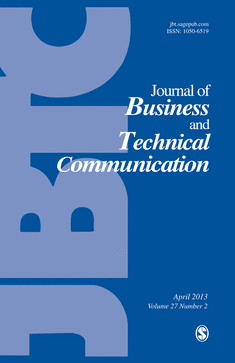
JOURNAL OF BUSINESS AND TECHNICAL COMMUNICATION
Exploring the Nexus of Communication and InnovationJOURNAL OF BUSINESS AND TECHNICAL COMMUNICATION is a premier peer-reviewed journal published by SAGE PUBLICATIONS INC, renowned for its rigorous approach to exploring the intersection of communication practices within the realms of business and technology. Established in 1987, this journal stands at the forefront of its field with an impressive impact factor, consistently ranked in the Q1 quartile across multiple categories including Business and International Management, Communication, as well as Business, Management and Accounting. With an emphasis on innovative research and practical applications, it serves as an invaluable resource for researchers, professionals, and students aiming to enhance their understanding of effective communication strategies in a rapidly evolving business landscape. The journal does not currently offer open access, ensuring a curated and high-quality readership. Located in Thousand Oaks, California, the JOURNAL OF BUSINESS AND TECHNICAL COMMUNICATION continues to shape scholarly discourse and influence best practices in global communication.
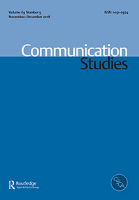
Communication Studies
Illuminating the Path of Communication ExcellenceCommunication Studies is a premier journal dedicated to advancing the field of communication, published by Routledge Journals, Taylor & Francis Ltd in the United Kingdom. With an ISSN of 1051-0974 and an E-ISSN of 1745-1035, this journal has established itself as a pivotal platform for scholarly work since its inception in 1989. As a member of the esteemed Q1 quartile in communication for 2023, it ranks within the top echelons of the Scopus database, placed at #106 out of 511 in social sciences communication, signaling its influential contribution in the field, with a striking 79th percentile ranking. The journal publishes original research, theoretical discussions, and critical reviews that address various aspects of communication processes and practices, making it invaluable for researchers, professionals, and students who wish to stay abreast of the latest developments. While it currently does not offer Open Access options, its extensive reach and rigorous peer-review process ensure the publication of high-quality, impactful research. For inquiries, the editorial office can be contacted at 2-4 Park Square, Milton Park, Abingdon OX14 4RN, Oxon, England.
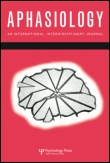
APHASIOLOGY
Exploring Interdisciplinary Insights into Aphasia and CognitionAPHASIOLOGY is a leading international journal, published by Routledge Journals, Taylor & Francis Ltd, dedicated to the advancement of knowledge in the fields of linguistics, neurology, and communication disorders. With a strong emphasis on interdisciplinary research, the journal spans a wide array of topics related to language processing, aphasia, and associated cognitive functions. Having achieved notable rankings in multiple categories, including Q1 in Linguistics and Language and Q2 in Neurology, APHASIOLOGY boasts an impressive presence in the academic community, reflected in its prestigious Scopus rankings across various fields. Operating without an open access model, the journal ensures rigorous peer-review standards are upheld, promoting high-quality research disseminated to scholars and practitioners alike. As it converges from its inception in 1987 to future milestones set for 2024, APHASIOLOGY remains a vital resource for researchers, healthcare professionals, and students pursuing advanced studies in speech and language pathology, cognitive neuroscience, and related disciplines, effectively addressing the complexities of language and communication through research and scholarship.
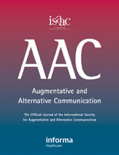
Augmentative and Alternative Communication
Exploring Innovations in Communication AccessibilityAugmentative and Alternative Communication is a premier academic journal published by Taylor & Francis Ltd, dedicated to the interdisciplinary study of communication methodologies that cater to individuals with speech and language impairments. Operating since 1985, this journal continues to serve as a vital resource for researchers, professionals, and students engaged in the fields of medicine, rehabilitation, and speech and hearing. With its commitment to disseminating innovative research, it boasts an impressive standing in the academic community, ranking in the Q2 category within its respective fields by both Scopus and the latest evaluation metrics. Though not an open-access journal, it provides access options that ensure vital research remains available to a broad audience. As it converges into 2024, Augmentative and Alternative Communication not only highlights emerging trends and interventions but also aims to foster collaboration and knowledge-sharing that advances effective communication strategies globally.

Turkiye Iletisim Arastirmalari Dergisi-Turkish Review of Communication Studies
Enhancing Understanding of Contemporary Communication Processes.Turkiye Iletisim Arastirmalari Dergisi, also known as the Turkish Review of Communication Studies, is an esteemed academic journal published by Marmara University, Faculty of Communication. Since its establishment as an Open Access journal in 2000, it has been committed to advancing the field of communication studies, offering a platform for innovative research and discourse in this dynamic discipline. With an ISSN of 2630-6220, the journal seeks to bridge the gap between theory and practice, addressing various sub-disciplines such as media studies, interpersonal communication, and public relations. Situated in the vibrant academic landscape of Istanbul, Turkiye, the journal aims to foster scholarly dialogue among researchers, professionals, and students, contributing significantly to the global communication research community. As it continues to grow in relevance and impact, Turkiye Iletisim Arastirmalari Dergisi plays a vital role in promoting diverse perspectives and enhancing the understanding of communication processes in contemporary society.